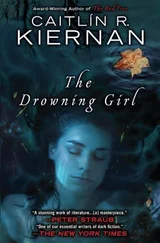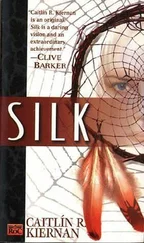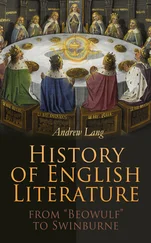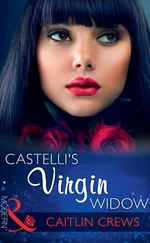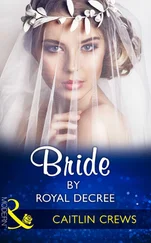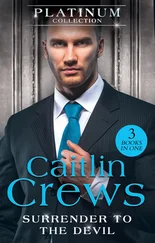Odin, Odin Allfather, Odin Hel-binder, Odin Langbard —the central god in the Norse pantheon.
With his brothers, Vili and Vé , Odin slew the ur -giant Ymir and used the dead giant’s corpse to order the cosmos. After hanging on the World Ash for nine days, pierced by his own spear, Odin won wisdom to rule the nine worlds. At the cost of his left eye, he drank from the Well of Wisdom and gained knowledge of the past, present, and future. With the other Æsir , Odin will fall at Ragnarök .
Ragnarök —Old Norse, “twilight” or “fate of the gods.” Ragnarök is the final battle between the Æsir and the forces of chaos, including Loki and his monstrous offspring, along with the other giants. Ragnarök will destroy almost all the universe and will herald a new age.
Rán —wife of Ægir and mother of the nine daughters, Rán is a goddess of the sea. It is said that Rán had a net with which she sometimes snared unfortunate sailors. Indeed, Rán means “theft.” All men who drown at sea are taken by Rán.
sahagin —“sea hag,” a phrase applied to Grendel’s mother.
Sigurd Dragonslayer —an heroic figure of Norse mythology, also figuring prominently in the Icelandic Völsunga saga. Foster son of the god Regin , Sigurd slays Fafnir (son of the dwarf king Hreidmar and brother of Regin), who has assumed the form of a dragon. Sigurd is known in Old Norse as Sigurðr and in Old German as Siegfried .
Skoll —the wolf that pursues the chariot of the goddess Sól across the sky each day.
skorsten —Swedish, a chimney.
Skuld —(see Norns ).
Scylding —Old English (plural Scyldingas), Old Norse Skjöldung (plural Skjöldungar), translates as “shielding” and refers to members of a family of royal Danes and also to their people. The etymology of the word may be traced to King Scyld/ Skjöld.
Sól —goddess of the sun, daughter of Mundilfæri and Glaur , wife of Glen ; Sól bears the sun across the daytime sky in a golden chariot.
Svartálfheim —the subterranean realm of the dwarves.
Thor Giant-killer —the Norse god of thunder, son of Odin and Jörd . Thor wields the hammer Mjolnir , and at Ragnarök , he will die while slaying the World Serpent.
Twilight of the Gods—Ragnarök .
Urdarbrunn —the well from which the three Norns draw water to nourish the World Ash.
Urdines —the nine daughters of the sea god Ægir and the goddess Rán; the waves.
Valgrind —the gates of Valhalla .
Valhalla —in Old Norse, Valhöll , “hall of the slain.”
This is Odin’s great hall in Ásgard , where those slain in battle feast and celebrate and await the coming of Ragnarök .
Valkyries —goddesses who serve Odin and may be synonymous with the Norns. The Valkyries welcome the einherjar to Valhalla , where they also serve as handmaidens. Odin sends the Valkyries to every battle, where they determine victory and death.
Vandals —an ancient Germanic tribe. Consisting of two groups, the Silingi and the Hasdingi, the Vandals were mighty warriors.
Vanir —a subgroup of the Æsir , including the gods Njörd , Heimdall , Freyja , and Frey . For a time, the Vanir warred with the other Æsir, until a hostage exchange brought an end to the fighting. The Vanir dwell in Vanaheimr .
Vé —brother of Odin and Vili , son of Bestla and Bur , and with his brothers he created the world from the remains of the slain giant Ymir . Verdandi —the Norn Verðandi (see Norns).
Víðar —often known as the “silent god,” Víðar is Odin’s son by the giantess Grid . At Ragnarök , he will avenge his father’s death, and is one of the few Æsir who will survive that final battle. A god of vengeance, and he who defines space (as Heimdall defines the boundaries of time).
Vili —Odin’s brother. With Odin and Vé , he created Midgard and ordered the world.
warg —Old Norse, “wolf.”
Weormgræf —“worm grave,” “dragon’s grave.”
wergeld, wergild —payment, in the form of money or a human life, for murder and other very serious crimes.
World Serpent —(see Jörmungand ).
Wylfings (also Wulfings) —an important tribe, perhaps the ruling clan of the Eastern Geats. Wealthow , wife of the Danish king Hrothgar was of the Wylfing clan, as was Heatholaf , slain by Beowulf’s father, Ecgtheow .
Yggdrasil, World Ash —in Norse mythology, the tree that stands at the center of the cosmos, uniting the nine worlds. The only two humans who will survive Ragnarök — Lif and Lifthrasir —will do so by seeking shelter in the boughs of Yggdrasil and feeding off the dew on its leaves.
Ymir —the first giant, licked from a block of rime by the first cow Audhumla . Ymir was killed and dismembered by the Æsir Odin, Vé, and Vili (the sons of Bur), who used his remains to shape the cosmos.
Yule, Yuletide —a pre-Christian winter solstice celebration, including feasting and sacrifice, present in many Northern European cultures.
Author’s Note: If a teacher or professor has assigned you Beowulf , this novelization doesn’t count. Not even close. For readers who would like to learn more about Norse mythology, I strongly recommend John Lindow’s Norse Mythology: A Guide to the Gods, Heroes, Rituals, and Beliefs (Oxford University Press, 2001).
Author’s Note and Acknowledgments
Though in the writing of this novel I have generally and in the main followed the course set out for me by Neil Gaiman and Roger Avery’s screenplay, there are a number of additional sources I would like to acknowledge here. John Lindow’s Norse Mythology: A Guide to the Gods, Heroes, Rituals, and Beliefs (Oxford University Press, 2001) has been indispensable and is recommended to anyone with an interest in the beliefs and practices of the “Viking Age.” Also, I should acknowledge a number of scholarly works which proved very helpful and were frequently consulted during the writing of this book: J. R. R. Tolkien’s “ Beowulf : The Monsters and the Critics” (1936); John Leyerle’s “The Interlace Structure of Beowulf ” (1967); Ralph Arnold’s “Royal Halls: The Sutton Hoo Ship Burial” (1967); Christine Alfano’s “The Issue of Feminine Monstrosity: A Reevaluation of Grendel’s Mother” (1992); Frank Battaglia’s “The Germanic Earth Goddess in Beowulf” (1991); John Grigsby’s Beowulf & Grendel: The Truth Behind England’s Oldest Legend (2005); Kevin S. Kiernan’s “Grendel’s Heroic Mother” (1984); E. G. Stanley’s “Did Beowulf Commit ‘Feaxfeng’ against Grendel’s Mother” (1976); and Doreen M. Gilliam’s “The Use of the Term ‘Aeglaeca’ in Beowulf at Lines 893 and 2592” (1961). While working on this book, I have also frequently consulted two translations of the anonymous Beowulf poem—E. Talbot Donaldson’s classic prose translation of 1966 and Seamus Heaney’s 2000 verse translation. When making my own translations from the original Anglo-Saxon, I have used A Concise Anglo-Saxon Dictionary by J. R. Clark-Hall (University of Toronto Press, 1984) and Old English: A Historical Linguistic Companion by Roger Lass (Cambridge University Press; 1994), among others.
Читать дальше

